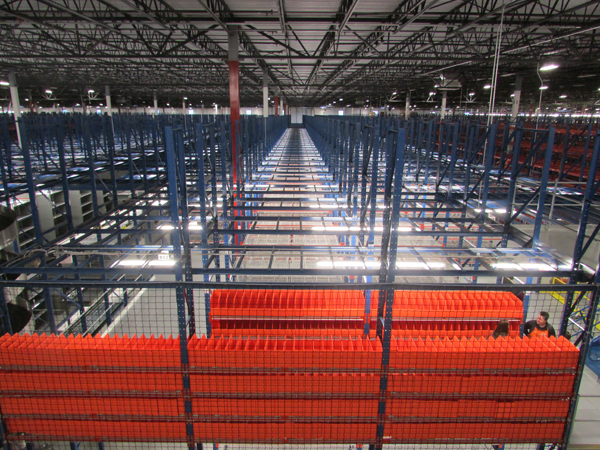Home Depot adds $1 billion in e-commerce revenue
William B. Cassidy, Senior Editor | Feb 25, 2015 3:43PM EST

Home Depot hammered home a big gain in e-commerce in 2014, increasing online sales by 36 percent or $1 billion after overhauling its e-commerce direct fulfillment network.
The Atlanta-based retailer, No. 3 in JOC.com’s ranking of the Top 100 U.S. Importers, opened two direct fulfillment centers dedicated to e-commerce last year, a 1.1 million square foot facility in Locust Grove, Georgia (pictured above), and an 859,000-square foot DFC in Perris, California.
The third e-commerce DFC, a 1.6 million-square-foot distribution center, will open in Troy, Ohio, this year. With coverage from the three DFCs, Home Depot will be able to ship 90 percent of goods ordered online to almost any U.S. location within two days.
That $1 billion in e-commerce represented more than 20 percent of the $4.4 billion growth in total revenue Home Depot enjoyed in 2014. The retailer increased revenue for the year 5.5 percent to $83.2 billion. Revenue rose 8.3 percent in the fourth quarter to $19.2 billion.
With online sales accounting for about 4.5 percent of total sales, the retailer now does about $3.7 billion in business a year online, Internet Retailer estimates. About 40 percent of those transactions are fulfilled in Home Depot stores, said Craig Menear, president and CEO.
“When you think about almost 40 percent of our transactions touching and interacting in the store, it’s kind of hard to parse out the pure e-commerce,” Menear said in a Feb. 24 fourth-quarter earnings call with Wall Street analysts transcribed by Seeking Alpha.
Home Depot is building an interconnected retail model that leverages the Internet to in effect add a new dimension to its brick-and-mortar stores, while vastly increasing the number of individual products or SKUs its stores and distribution centers can handle.
That strategy is changing how it sells, orders and ships goods. “We want to be able to serve our customers wherever they shop,” Mark Holifield, executive vice president of supply chain, said in an interview last year at the opening of the Locust Grove fulfillment center.
“That entails leveraging all of our inventory, leveraging all our transportation and distribution assets, whether that’s a store-based delivery or central distribution and delivery,” he said.
That means more pressure on transportation operators from ocean shipping lines to last-mile logistics companies. All types of carriers will need to provide Home Depot with a more detailed and transparent view of both inbound and outbound inventory in motion.
A higher level of visibility will also help Home Depot better manage freight in a crisis, such as the severe West Coast port delays of the fourth quarter. Home Depot experienced 12- to 16-day delays but manage to get products through bottlenecks to inland DCs.
Greater use of web tools and apps to support the strategy is changing how goods are sold.
“We’ve seen a few categories in 2014, like patio, make a harder shift to the online space in large part because of the digital capabilities allow us to do things like select your own cushions, which would be extremely difficult to execute in store,” Menear said.
“There’s a lot of change that’s happening in the retail environment right now, and we feel good about the offerings that we’re putting out to our customers and driving value,” Menear said.

No comments:
Post a Comment